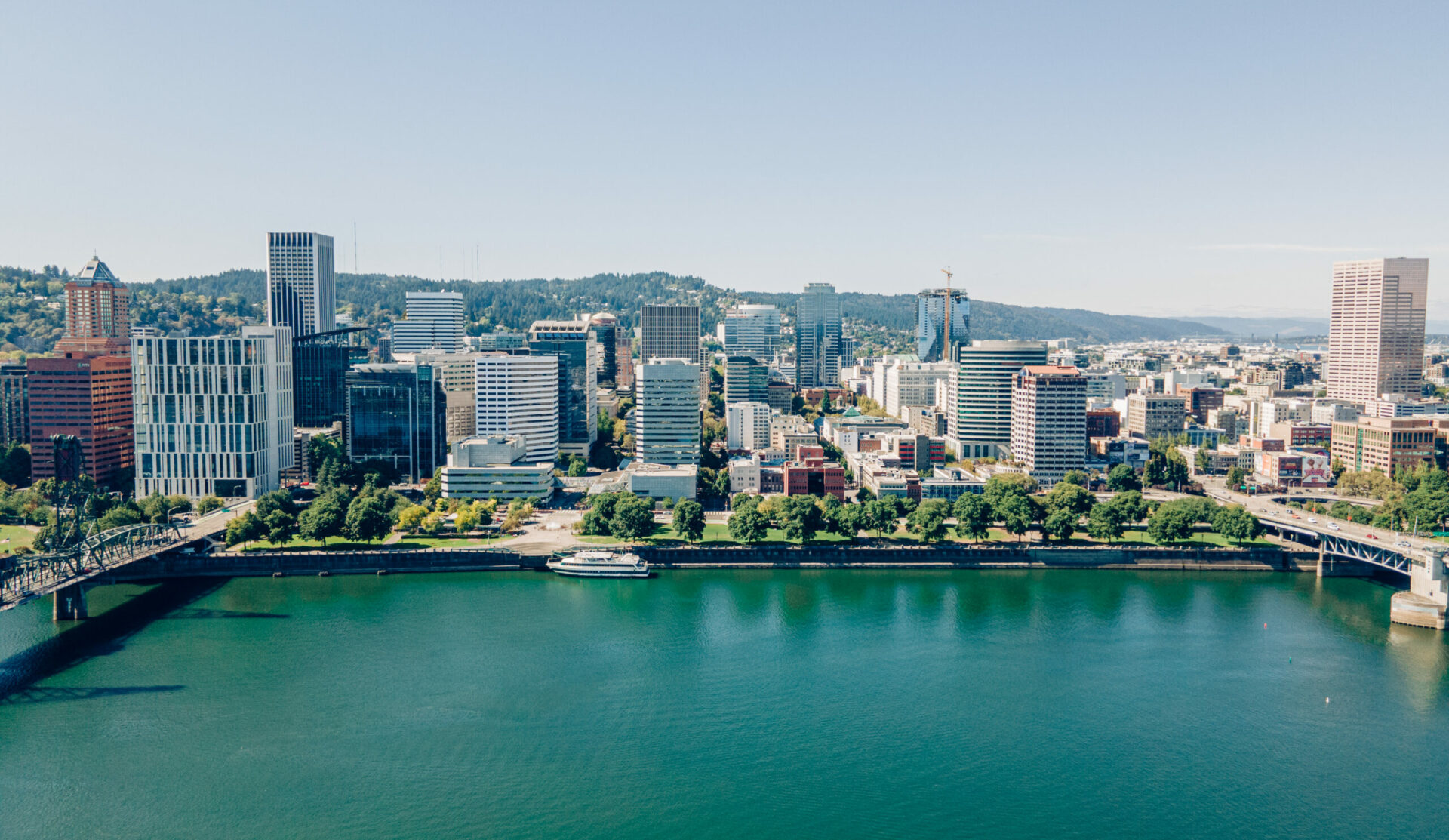Since it was incorporated in 1851, Portland has been a city of adaptation. It has gone through both hardships and prosperity throughout the years and has grown into what is now one of TIME’s World’s Greatest Places. In this blog series, we focus on major areas of the city and share some of the structures, individuals, and events that have transformed it from what it was “then” to what it is “now.”
Early Waterfront Buildings
Before the invention of the railroad, Portland relied on the Willamette River to import and export its goods. The waterway was the source of industry, so many of the city’s first buildings were constructed along the river adjacent to what is now Tom McCall Waterfront Park.
The city’s first commercial property was erected in 1857 at the corner of SW Oak St and Naito Pkwy (then Front Ave). Known as the Hallock & McMillan Building, the two-story structure was built of brick and cast iron by Portland’s first professional architect, Absalom Hallock, and contractor William McMillan. In the 1940s the façade was replaced with a nondescript stucco, but in 2011, Russell Development Co. bought the building and restored it to its original appearance. Today, the 5,000 square foot property is considered the oldest commercial building in Portland.
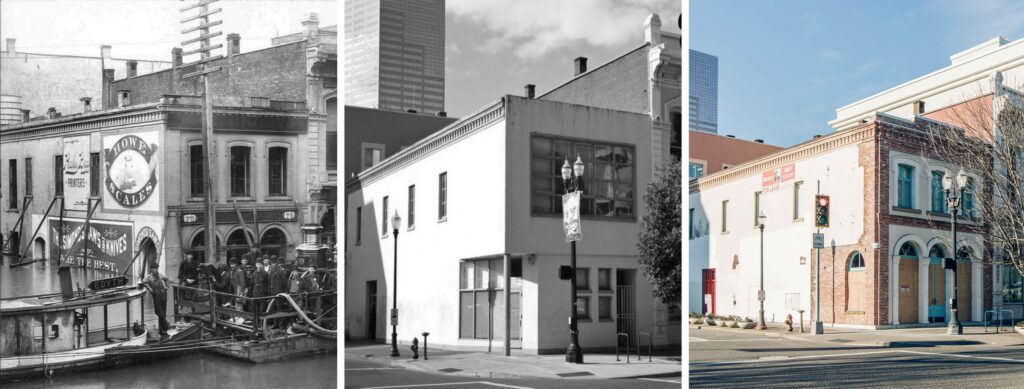
Other early buildings of that time that still stand today include the Northrup and Blossom-Fitch Building built in 1858, the Dielschneider Building built in 1859, and the side-by-side Pearne and Poppleton Buildings built in 1865 and 1867, respectively. These buildings were some of the earliest in what would become the city’s business core.
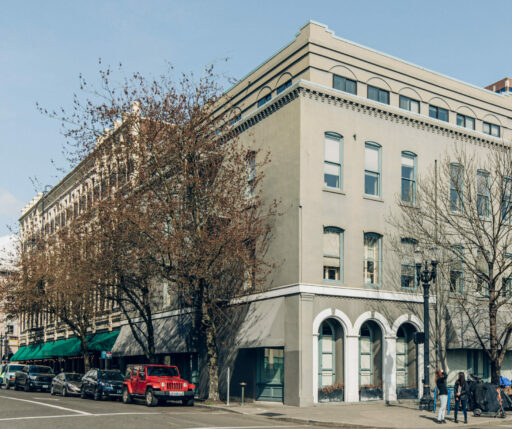
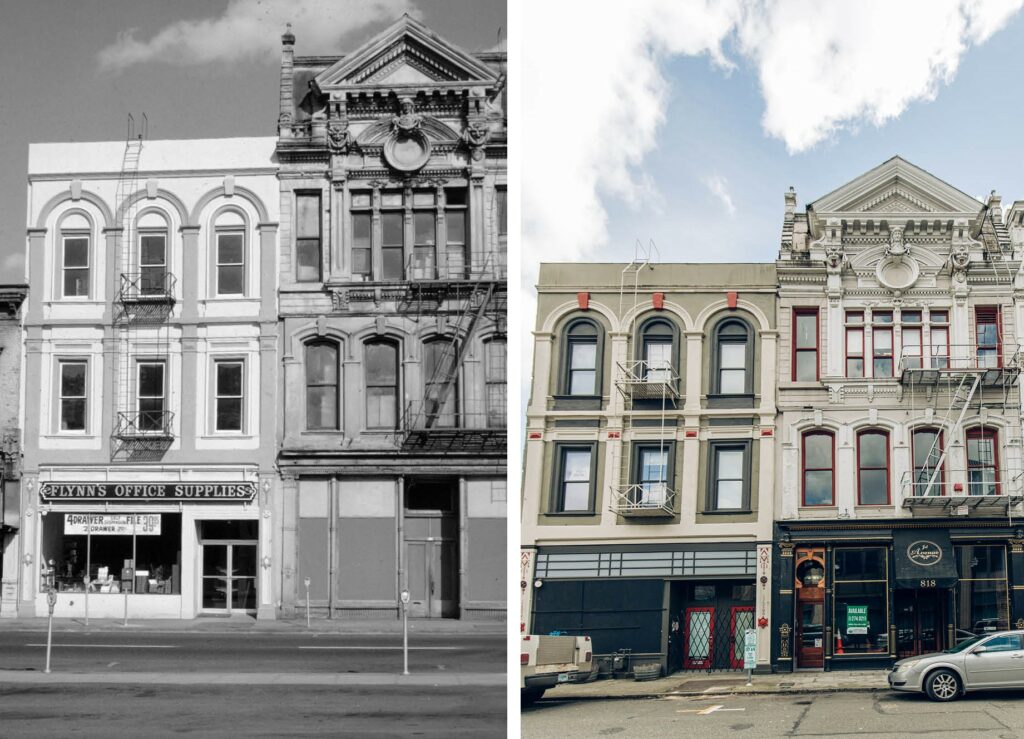
The Cast-Iron Business Core
By the mid-to-late 1800s the price of iron was more affordable than stone, so many architects turned to cast-iron building designs. Its flexibility also allowed them to incorporate beautifully decorative details into their exteriors and the style became very popular. In fact, Portland is home to the second-largest collection of cast-iron buildings in the country, and most of them can be found in the Skidmore/Old Town Historic District.
This area became the city’s business core, filling up with office buildings, warehouses, retail stores, and lodging by the end of the century. One of the most notable buildings still standing is the New Market Block on SW 1st Ave. When it opened in 1875, it was originally called Ankeny Hall with a theater on the second floor, a market on the first, and a restaurant and offices on the third floor. It was also the first home of Portland’s symphony orchestra. Today, office tenants and retail tenants occupy the building, and the area is home to the Portland Saturday Market.
Another favored cast-iron building is the Smith Block building, built in 1872. One of the oldest buildings along the waterfront area, Smith Block was originally home to a row of warehouses named for owners William K. and Joseph S. Smith. When it was renovated in 2008, it was built with office tenants in mind. It is also now home to a local restaurant, Lechon.

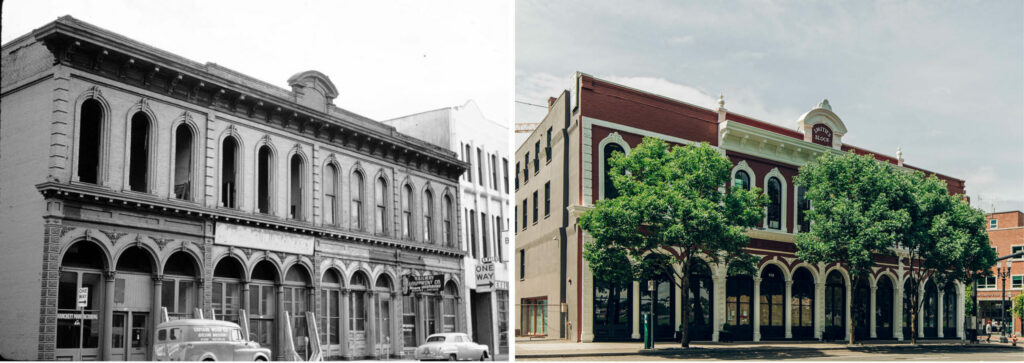
Towards the end of the century the charm of cast iron architecture began wearing off, replaced by steel-frame masonry-façade buildings. One of the last cast-iron buildings to be built is the Glisan Building in 1889. The two-story property was once home to medical offices, a creamery, and an electrical supplies company; today it’s known for its restaurant tenant, Kell’s Irish Pub.
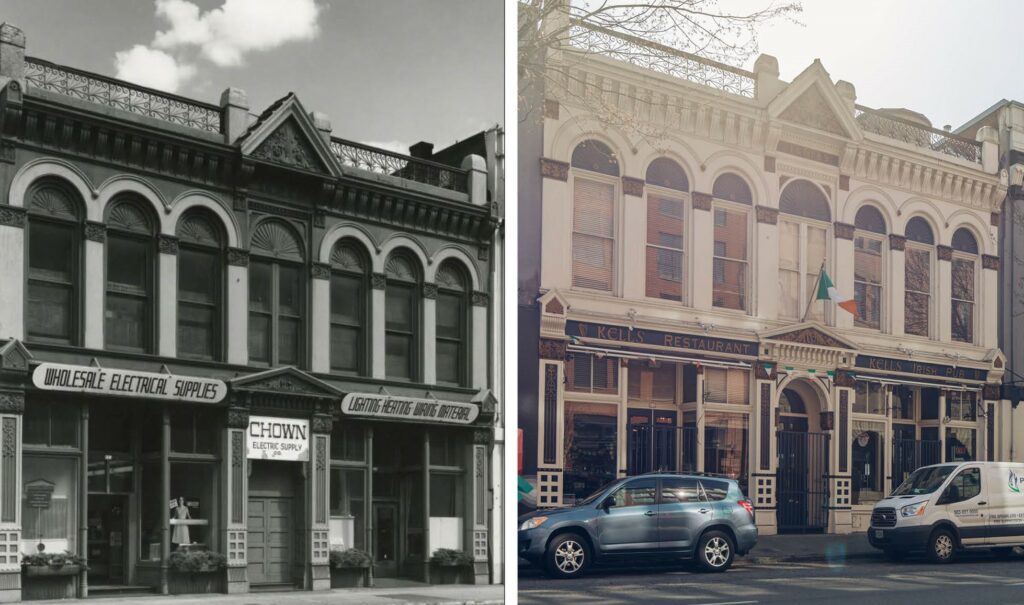
A Shift to Downtown
By the early 20th century, the waterfront area had suffered several river floods and fires (including the Great Fire of 1873, which destroyed 22 blocks). A greater railroad presence was also emerging in the city and dozens of large out-of-state companies had moved into the area following the Lewis & Clark Exposition in 1905. All of these factors began shifting Portland’s business core west towards what is now Downtown.
Fearing a loss of business on what was a trendy 3rd St (now 3rd Ave), store owners collaborated and created a movement called “The Great Light Way.” Together they funded the erection of brightly lit, two-and-a-half-ton steel arches that spanned every intersection on 3rd St from Yamhill St to Glisan St. The idea was to increase the desirability of 3rd Ave as a business center and even though the core continued to shift west by the 1920s, many believed the Great Light Way helped 3rd Ave businesses stay successful.

Building Up
As business shifted, Victorian homes and mansions that once dotted the Downtown landscape started being replaced by commercial structures. This began the era of high-rise office and apartment buildings.
Coincidentally, Portland’s first skyscraper and Portland’s tallest skyscraper share a similar title. When it opened in 1907, the Wells Fargo Building at SW 6th Ave & Oak St was 182 feet tall and had 12 stories. It was built using steel framing and stone, a materials style made popular after the era of cast iron. (By contrast, today’s Wells Fargo Center is 546 feet tall with 40 stories.)
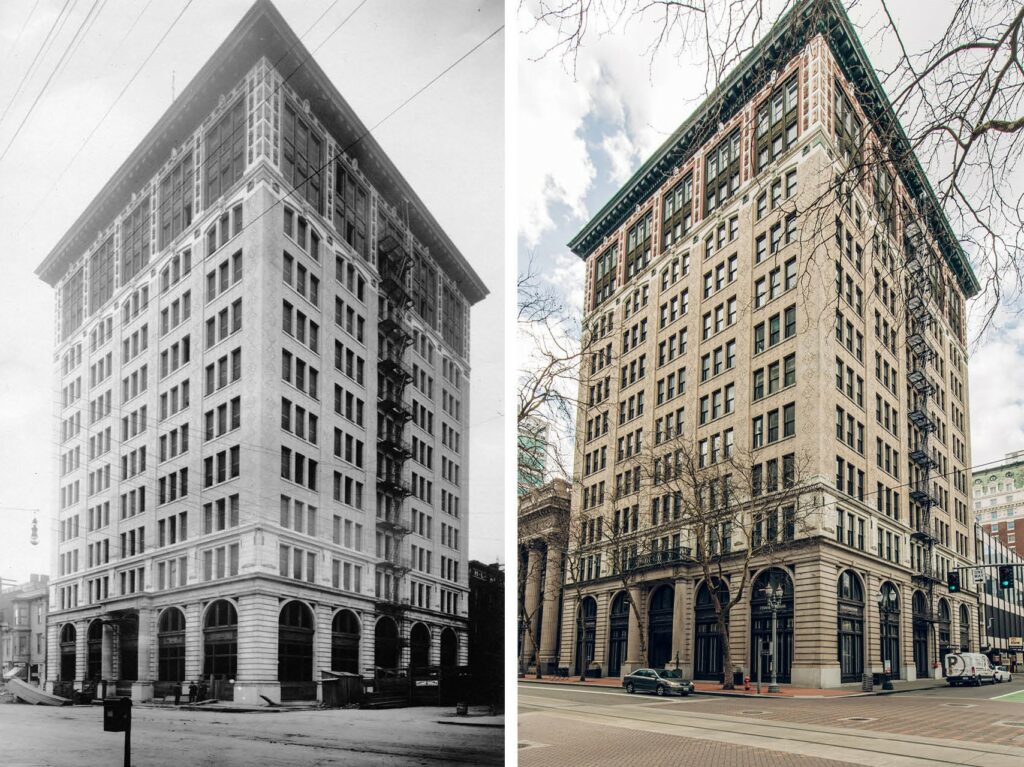
By 1910, the city’s population had doubled, so it didn’t take long for architects to start building up. Downtown high-rises like the Yeon Building, Pioneer Park Building, Failing Office Building, and the Journal Building (now Jackson Tower) were all constructed before 1914. High-rise hotels were also built during this time to cater to the thousands of tourists that visited the city each year. A few notable ones that still stand today are the Benson, the Multnomah, and the Imperial Hotels.
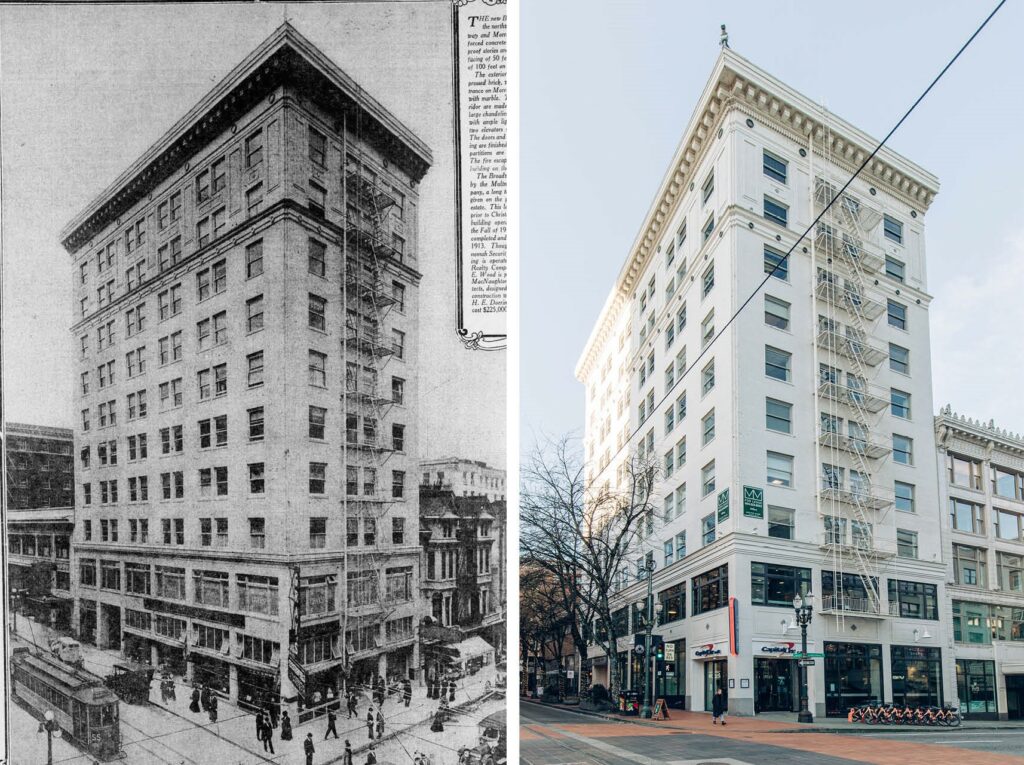
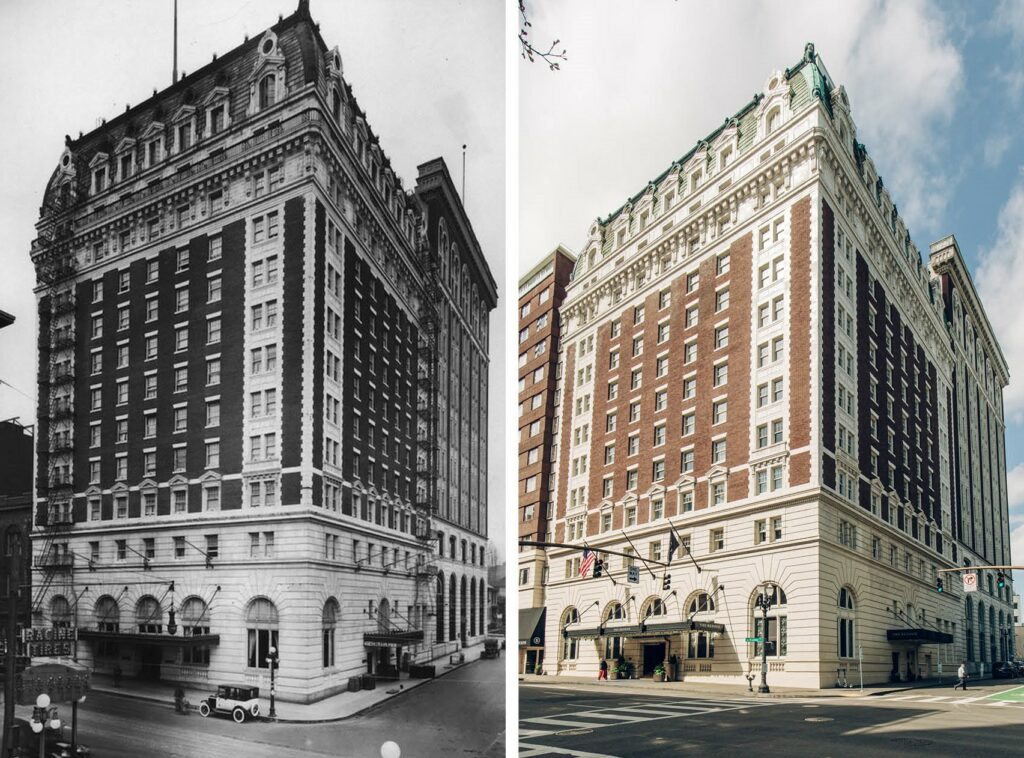
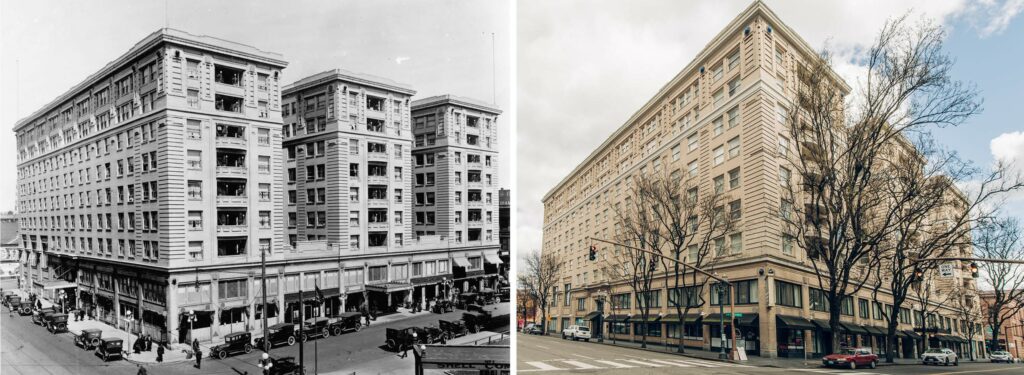
Theaters started to become popular as well. One of the first vaudeville theaters was the Pentages Theater at SW Broadway & SW Alder St. After it was renovated in 1928, it became the Alderway Building and today it is home to several office and retail tenants.
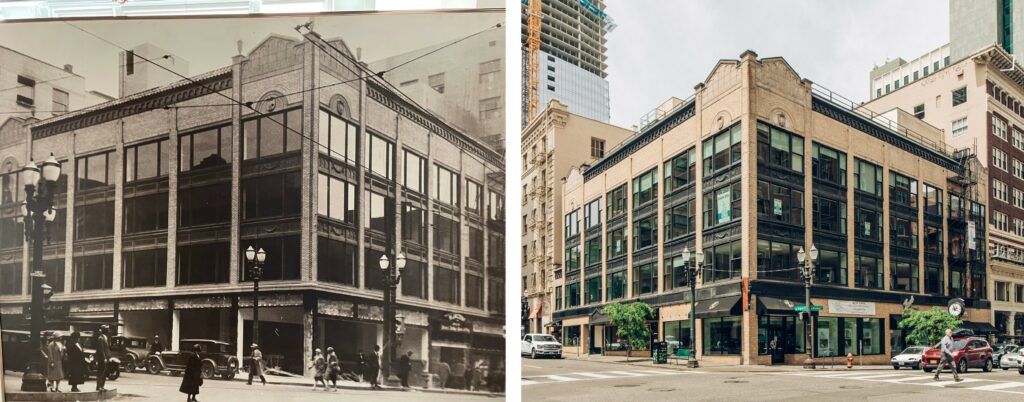
A prominent architect of this era, A.E. Doyle, built many of Portland’s most notable buildings. Doyle’s firm not only built the Meier & Frank Building (1909), the Benson Hotel (1912), Pittock Block (1914), and the U.S. National Bank Building (1917), but several large office buildings during the 1920s:
- The Bedell Building (now Cascade Building): a 12-story tower built in 1925 that features marble in the lobby and corridors and bronze lining the entrance and elevator doors.
- The Pacific Building: a 10-story building built in 1926 that housed Doyle’s headquarters once it was completed.
- The Public Service Building (now Power + Light Building): a 15-story building built in 1928 to house the offices of the Pacific Power and Light Company and the Portland Gas and Coke Company. At the time of its completion, it was the tallest building in Portland. Since then, the north and south wings have been built up from two stories to 12.
- The Terminal Sales Building: the only high-rise example of Art Deco architecture in Portland. It features 13 above-ground stories and was completed in 1927.
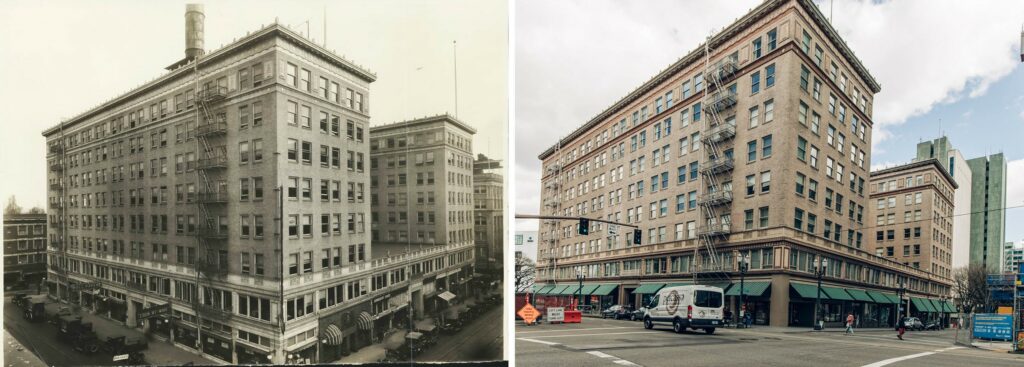
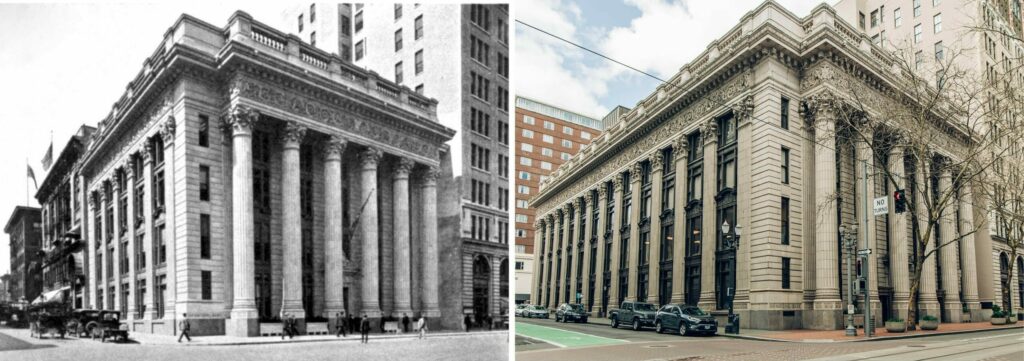
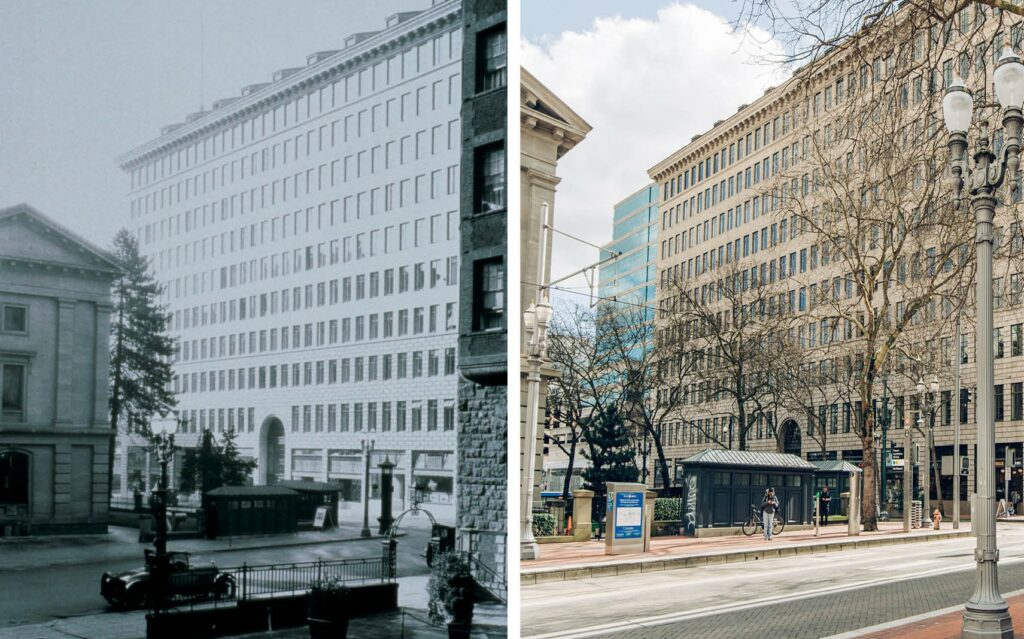
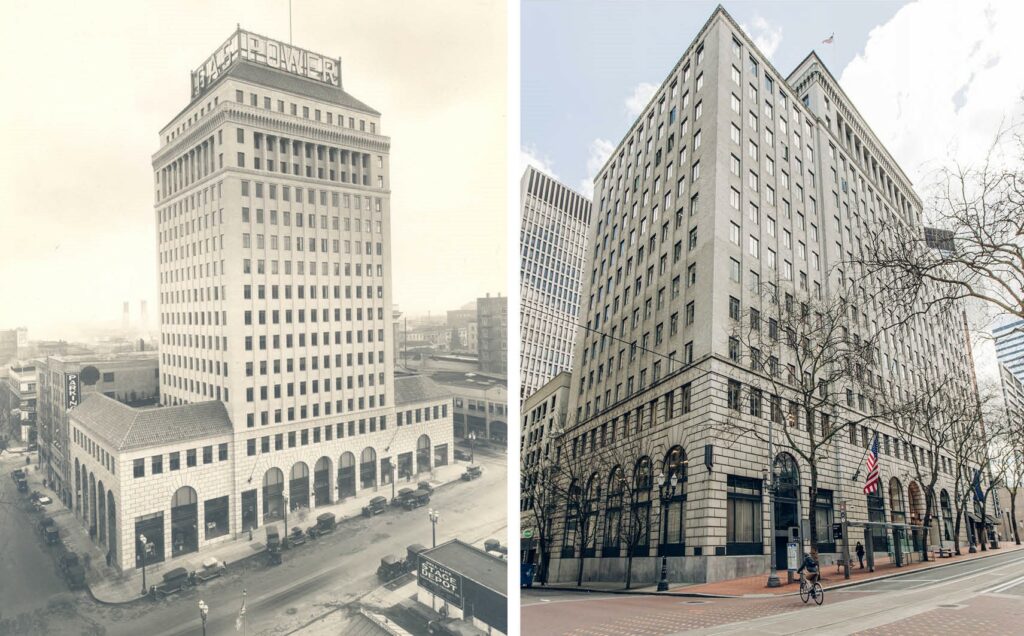
Over the next two decades during the Great Depression and World War II, construction slowed significantly. Many workers in the industry lost their jobs, were drafted into the military, or were forced to find work elsewhere.
Click here to read part two and learn more about the transformation of Downtown Portland.
If you’re interested in commercial real estate services in Downtown Portland or the Portland Metro area, please feel free to reach out to Peter Andrews at pandrews@melvinmark.com or 503.546.4522.

